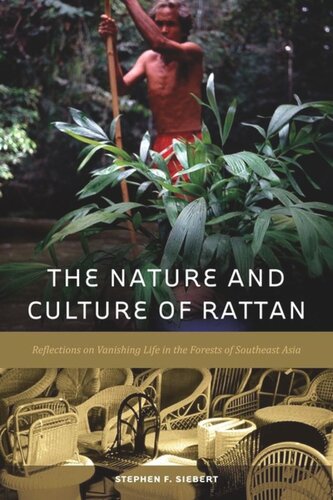

Most ebook files are in PDF format, so you can easily read them using various software such as Foxit Reader or directly on the Google Chrome browser.
Some ebook files are released by publishers in other formats such as .awz, .mobi, .epub, .fb2, etc. You may need to install specific software to read these formats on mobile/PC, such as Calibre.
Please read the tutorial at this link: https://ebookbell.com/faq
We offer FREE conversion to the popular formats you request; however, this may take some time. Therefore, right after payment, please email us, and we will try to provide the service as quickly as possible.
For some exceptional file formats or broken links (if any), please refrain from opening any disputes. Instead, email us first, and we will try to assist within a maximum of 6 hours.
EbookBell Team

4.1
100 reviewsRattan is the common name for a diverse group of climbing palms found throughout Old World tropical forests. For centuries people have used them for binding, basketry, house construction, food, and numerous other non-market purposes; more recently the canes of some species have been gathered for the multi-billion-dollar furniture, handicraft, and mat-making industries. Thus rattan continues to be vital to the culture and economic well being of millions of cane collectors, laborers, and artisans throughout tropical Asia and Africa. The Nature and Culture of Rattan explores this valuable forest product, the tropical forests on which it depends, and the societies that flourish by using and managing these remarkable plants.
The Nature and Culture of Rattan provides a distinctive and engaging review of rattan and the people whose lives are centered on it. It examines rattan use, biology, human culture, and challenges in tropical field research and conservation through the knowledge of cane workers in three Southeast Asian forest villages where the author lived over a twenty-five-year period. He effectively challenges commonly held views of "slash and burn" farming, rainforest destruction, and population increase while underscoring the myriad forces involved in individual decision-making and social and environmental change. Personal stories and experiences are integrated with scientific information in a manner that will attract nonspecialists as well as students and researchers.
The Nature and Culture of Rattan will be a valuable addition to undergraduate and graduate courses in ecology, anthropology, rural sociology and development, forestry, and natural resource management. A website (www.cfc.umt.edu/rattan) includes additional photographs, suggested reading, and discussion topics.